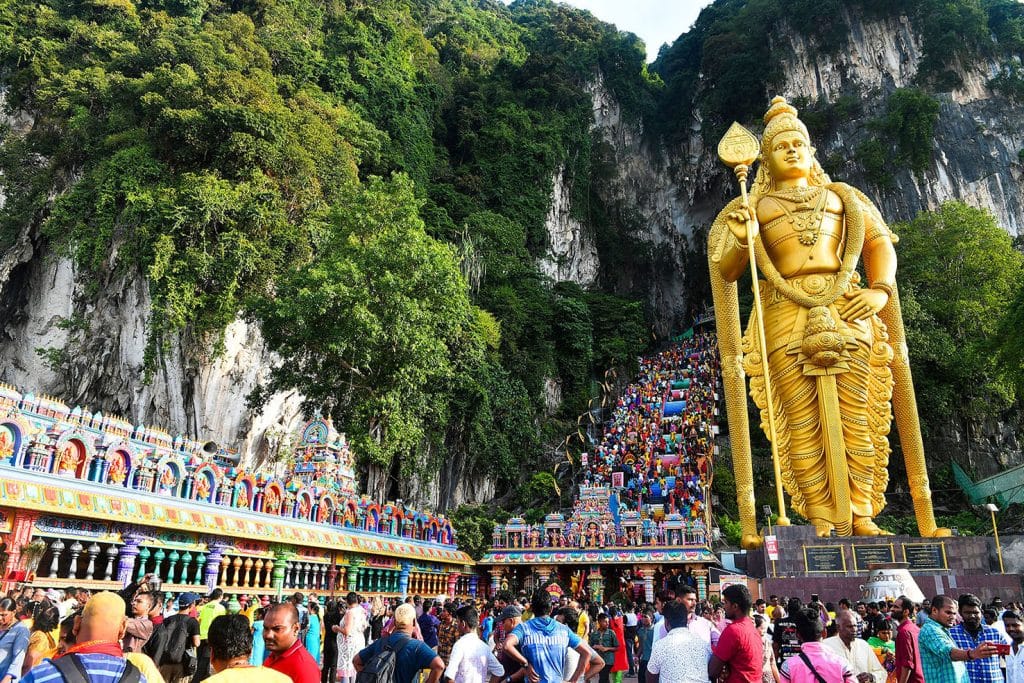Batu Caves, located just a short distance north of Malaysia’s bustling capital, Kuala Lumpur, is a majestic limestone hill complex that houses a series of awe-inspiring caves and religious temples. This iconic destination stands tall as a beacon of spirituality and cultural significance, drawing visitors from all walks of life to experience its grandeur and embrace the captivating blend of nature and faith. Journey with us as we explore the marvels of Batu Caves and the rich tapestry of history and tradition that enlivens this sacred site.
The Mythical History of Batu Caves
In local lore, Batu Caves holds a fascinating mythical tale. It is said that the caves were discovered in the late 1800s by an Indian trader, who stumbled upon this hidden gem while seeking shelter from a torrential downpour. Recognizing the significance of the caves’ natural formations, he soon dedicated the site to Lord Murugan, the Hindu deity of war and victory, and it became a revered pilgrimage site for the Hindu community.
Ascending the Steps of Devotion
One of the most distinctive features of Batu Caves is the monumental golden statue of Lord Murugan, towering at an impressive 42.7 meters (140 feet) in height. Greeting visitors as they arrive, the statue sets the stage for the breathtaking climb to the main cave. As devotees and visitors ascend the 272 vibrant, rainbow-colored steps, they embark on a symbolic journey of self-purification and spiritual awakening.
The Spiritual Sanctuary
At the summit, the vast and awe-inspiring Cathedral Cave awaits, offering a sense of serenity and tranquility that permeates the air. The enormous chamber is adorned with numerous shrines and intricately crafted statues dedicated to various Hindu deities. The soft glow of flickering oil lamps and the fragrance of burning incense create a mystical ambiance, invoking a profound connection with the divine.
Religious Festivals and Thaipusam Extravaganza
While Batu Caves is an enchanting destination year-round, it truly comes alive during the annual Thaipusam festival. Celebrated by the Tamil community, Thaipusam is a significant religious event that commemorates Lord Murugan’s victory over evil forces. During this time, devotees undertake arduous physical and mental challenges to seek blessings and express their gratitude. One of the most striking sights during Thaipusam is the kavadi procession, where devotees carry ornate structures adorned with peacock feathers and milk pots on their bodies as offerings.
Embracing the Marvels of Nature
Beyond its spiritual significance, Batu Caves is also a sanctuary for nature enthusiasts. The limestone formations offer a haven for diverse flora and fauna, contributing to the delicate ecosystem of the surrounding area. Batu Caves’ conservation efforts highlight the importance of preserving these natural wonders, reminding visitors of the profound connection between humanity and the environment.
Conclusion
Batu Caves, with its remarkable blend of spirituality, cultural heritage, and natural wonders, remains a jewel in Selangor’s crown of attractions. As visitors traverse the colorful steps, immerse themselves in the divine atmosphere, and witness the fervor of religious celebrations, they leave with a deeper appreciation for Malaysia’s rich cultural tapestry and the spiritual significance of this enchanting site. Batu Caves is more than just a tourist destination; it is a testament to the enduring power of faith and the timeless allure of nature’s marvels.

